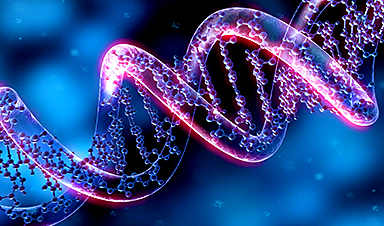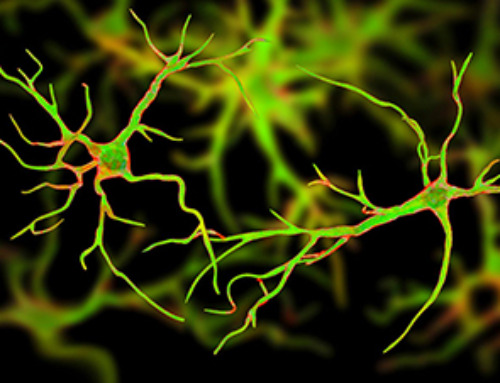Research reveals that selective expression of maternal or paternal X chromosomes varies by organ, driven by cellular competition.
A new study published today (July 26) in Nature Genetics by the Lymphoid Development Group at the MRC Laboratory of Medical Sciences has revealed that the contribution of cells expressing maternal or paternal X chromosomes can be selectively skewed in different parts of the body. The study leverages human data from the 1000 Genomes Project combined with mouse models of human X chromosome-linked DNA sequence variation to advance our fundamental understanding of development in biologically female individuals who have two X chromosomes.
Mechanisms Behind X Chromosome Selection
Until now, it was thought that the usage of maternal and paternal X-chromosomes was similar throughout the body. The new work shows that this is not always true, and that different organs may be skewed towards using either maternal or paternal X-chromosomes. The work also reveals the process driving this skew: competition between cells expressing either one or the other X-chromosome. In some individuals, cells in organs such as the heart mostly use the X chromosome from one parent, whereas immune cells almost exclusively utilize the X chromosome from the other parent. This provides an important step forward in understanding the underlying principles and mechanisms of development in XX individuals.
Implications of X Chromosome Selection
Biological females inherit two X chromosomes – one from each parent – along with all the other genetic material that builds and sustains the body. But despite the presence of both parental X chromosomes, only one X chromosome is actively expressed in any given cell. Since the DNA sequence of each X chromosome has genetic variations, each cell effectively chooses to express a set of unique characteristics derived from either one or the other parent.
"We realized that when cells chose one of their two X chromosomes over the other, they also chose which set of genetic variants to express," said Matthias Merkenschlager, who leads the Lymphocyte Development Research Group. "As a result, individual cells express distinct genetic variants. We are now working to find out more about how X-linked genetic variants shape organismal development, and whether selective X chromosome usage in specific tissues may affect the likelihood of certain conditions later in life."
Research Focus on the STAG2 Gene
The researchers focussed on a specific gene on the X chromosome, called STAG2. They found that cells with a genetic variant of STAG2 failed to develop into immune cells called lymphocytes in females that carried variant STAG2 on one X chromosome, and the common ('reference') version of STAG2 on the other X chromosome.
By contrast, cells with the same variant of STAG2 were fully competent to form lymphocytes in XY males (with a single copy of the X chromosome), or females in which both X chromosomes carried the variant.
The researchers concluded that what prevents variant cells from forming lymphocytes is not the variant as such, but the presence of cells expressing the reference version of STAG2. This shows that cells compete for 'permission' to form specific cell types within the body. The findings reveal a new aspect of X-linked diversity not previously appreciated: that interactions between cells can shape the contribution of X-linked diversity to specific cell types and tissues.
Even if cells expressing reference STAG2 outcompete to form the blood, cells expressing the variant may predominate in other parts of the body. For the study's lead author Teresa Buenaventura, this sparked a personal curiosity: "'Working on this project has been particularly exciting for me since it has made me curious about the contribution of each of the X chromosomes to my different tissues," she said.
These findings reveal a previously underappreciated aspect of X-linked diversity, where interactions between epigenetically diverse clones can shape the contribution of X-linked genetic diversity to specific cell types and tissues.
Reference: "Competition shapes the landscape of X-chromosome-linked genetic diversity" 25 July 2024, Nature Genetics.
DOI: 10.1038/s41588-024-01840-5
News
New skin-permeable polymer delivers insulin without needles
A breakthrough zwitterionic polymer slips through the skin’s toughest barriers, carrying insulin deep into tissue and normalizing blood sugar, offering patients a painless alternative to daily injections. A recent study published in the journal Nature examines [...]
Multifunctional Nanogels: A Breakthrough in Antibacterial Strategies
Antibiotic resistance is a growing concern - from human health to crop survival. A new study successfully uses nanogels to target and almost entirely inhibit the bacteria P. Aeruginosa. Recently published in Angewandte Chemie, the study [...]
Nanoflowers rejuvenate old and damaged human cells by replacing their mitochondria
Biomedical researchers at Texas A&M University may have discovered a way to stop or even reverse the decline of cellular energy production—a finding that could have revolutionary effects across medicine. Dr. Akhilesh K. Gaharwar [...]
The Stunning New Push to Protect the Invisible 99% of Life
Scientists worldwide have joined forces to build the first-ever roadmap for conserving Earth’s vast invisible majority—microbes. Their new IUCN Specialist Group reframes conservation by elevating microbial life to the same urgency as plants and [...]
Scientists Find a Way to Help the Brain Clear Alzheimer’s Plaques Naturally
Scientists have discovered that the brain may have a built-in way to fight Alzheimer’s. By activating a protein called Sox9, researchers were able to switch on star-shaped brain cells known as astrocytes and turn them into [...]
Vision can be rebooted in adults with amblyopia, study suggests
Temporarily anesthetizing the retina briefly reverts the activity of the visual system to that observed in early development and enables growth of responses to the amblyopic eye, new research shows. In the common vision [...]
Ultrasound-activated Nanoparticles Kill Liver Cancer and Activate Immune System
A new ultrasound-guided nanotherapy wipes out liver tumors while training the immune system to keep them from coming back. The study, published in Nano Today, introduces a biodegradable nanoparticle system that combines sonodynamic therapy and cell [...]
Magnetic nanoparticles that successfully navigate complex blood vessels may be ready for clinical trials
Every year, 12 million people worldwide suffer a stroke; many die or are permanently impaired. Currently, drugs are administered to dissolve the thrombus that blocks the blood vessel. These drugs spread throughout the entire [...]
Reviving Exhausted T Cells Sparks Powerful Cancer Tumor Elimination
Scientists have discovered how tumors secretly drain the energy from T cells—the immune system’s main cancer fighters—and how blocking that process can bring them back to life. The team found that cancer cells use [...]
Very low LDL-cholesterol correlates to fewer heart problems after stroke
Brigham and Women's Hospital's TIMI Study Group reports that in patients with prior ischemic stroke, very low achieved LDL-cholesterol correlated with fewer major adverse cardiovascular events and fewer recurrent strokes, without an apparent increase [...]
“Great Unified Microscope” Reveals Hidden Micro and Nano Worlds Inside Living Cells
University of Tokyo researchers have created a powerful new microscope that captures both forward- and back-scattered light at once, letting scientists see everything from large cell structures to tiny nanoscale particles in a single shot. Researchers [...]
Breakthrough Alzheimer’s Drug Has a Hidden Problem
Researchers in Japan found that although the Alzheimer’s drug lecanemab successfully removes amyloid plaques from the brain, it does not restore the brain’s waste-clearing system within the first few months of treatment. The study suggests that [...]
Concerning New Research Reveals Colon Cancer Is Skyrocketing in Adults Under 50
Colorectal cancer is striking younger adults at alarming rates, driven by lifestyle and genetic factors. Colorectal cancer (CRC) develops when abnormal cells grow uncontrollably in the colon or rectum, forming tumors that can eventually [...]
Scientists Discover a Natural, Non-Addictive Way To Block Pain That Could Replace Opioids
Scientists have discovered that the body can naturally dull pain through its own localized “benzodiazepine-like” peptides. A groundbreaking study led by a University of Leeds scientist has unveiled new insights into how the body manages pain, [...]
GLP-1 Drugs Like Ozempic Work, but New Research Reveals a Major Catch
Three new Cochrane reviews find evidence that GLP-1 drugs lead to clinically meaningful weight loss, though industry-funded studies raise concerns. Three new reviews from Cochrane have found that GLP-1 medications can lead to significant [...]
How a Palm-Sized Laser Could Change Medicine and Manufacturing
Researchers have developed an innovative and versatile system designed for a new generation of short-pulse lasers. Lasers that produce extremely short bursts of light are known for their remarkable precision, making them indispensable tools [...]





















